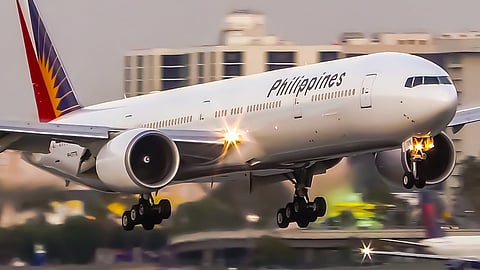
- NEWS
- the EDIT
- COMMENTARY
- BUSINESS
- LIFE
- SHOW
- ACTION
- GLOBAL GOALS
- SNAPS
- DYARYO TIRADA
- MORE

Amid the 30 percent slip in its net income for the first half, the management of the country’s flag carrier, Philippine Airlines (PAL), maintained that it remains positive and on track to achieve growth this year.
“Philippine Airlines remains on track in its transformative growth strategy as we deliver a more efficient airline offering quality service, to fulfill our mandate as the Philippines’ flag carrier and only full-service airline with the largest network,” PAL Holdings president and chief operating officer Lucio K. Tan III said.
PAL’s comprehensive net income slipped to P9.48 billion in the first half of the year due to increased expenses resulting from expanding operations and fleet growth amid post-revenge travel surge market normalization.
However, the airline’s first half concluded with an increase in passenger volume, cargo, and ancillary services, leading to a 4 percent growth in total consolidated revenues, amounting to P90.92 billion.
PAL expanded flights by 11 percent and carried almost 8 million passengers across its international and domestic network, 13 percent more than the 7 million in the same period last year.
“As the industry adjusts to a re-balancing between demand and capacity, and continues to face cost challenges, we are implementing a disciplined investment plan to upgrade our fleet and continue our digital transformation so that we can serve our passengers better,” Captain Stanley K. Ng, PAL president and operating officer, said.
Mabuhay miles expansion
“We are happy to announce a milestone expansion of our Mabuhay Miles lifestyle program, having just breached the level of six million members,” he added.
Passenger revenues, however, increased by P1.60 billion (2.05 percent) compared to the same period last year, reaching P79.84 billion during the first six months of 2024.
Cargo revenues also saw an upward trend, rising to P4.12 billion, an increase of P0.31 billion from the previous year’s figure of P3.81 billion.
Ancillary revenues experienced significant growth of 28.56 percent, reaching P6.90 billion.
On the expense side, flying operations expenses incurred in the first half of 2024 amounted to P42.91 billion, reflecting a 13.09 percent increase compared to the previous year’s P37.94 billion. It was largely due to a 7.10 percent rise in fuel consumption as the number of flights increased.
Maintenance expenses surged by 16.08 percent as of the end of June, compared to P9.98 billion in the same period the previous year due to higher aircraft utilization resulting from more flights and additional six engine quick turn shop visits in 2024 than in 2023.
Aircraft and traffic servicing expenses climbed by 18.44 percent over the same period last year, reaching P7.69 billion. This growth was driven by the increased number of flights operated in 2024, particularly in terms of ground handling charges and landing and take-off fees.
Amid a normalizing market environment in contrast to the travel demand surges of 2023, the airline achieved an operating income of P10.6 billion, still aligned with company expectations.
On the other hand, capital expenditures rose to $157 million, primarily allocated for aircraft purchases, maintenance, and cabin upgrades to provide a better customer experience.
